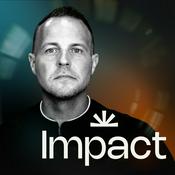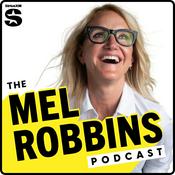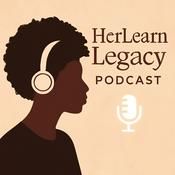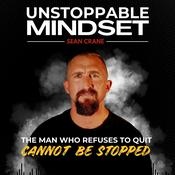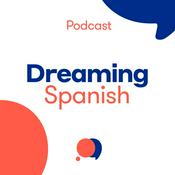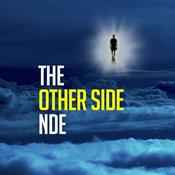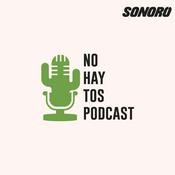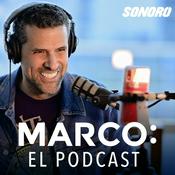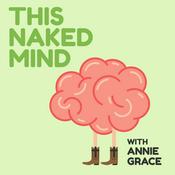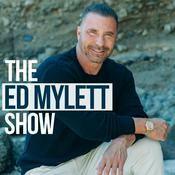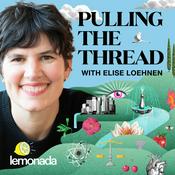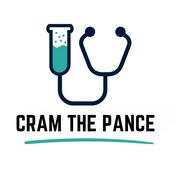Available Episodes
5 of 43
- On Rare Innovators: Nasha Fitter is Redefining the Rare Disease Playbook – “Who says we can’t do this?”In this episode of On Rare Innovators, Mandy Rohrig, Senior Director of Patient Advocacy at BridgeBio, and David Rintell, Head of Patient Advocacy at BridgeBio, talk with Nasha Fitter, a parent, entrepreneur, and rare disease leader whose determination was reshaped the day her daughter Amara was diagnosed with FOXG1 syndrome. Drawing on a career defined by bold pivots and purpose-driven problem solving, Nasha is challenging long-held assumptions about what small, rare disease communities can achieve. From building the FOXG1 Research Foundation to co-founding Citizen Health, she has pushed for new models of data, drug development, and patient empowerment. Nasha’s story is a reminder that innovation often begins with a single question: “Who says we can’t do this?”--------43:41
- "It’s good to be alive." Greg is living with LMNA cardiomyopathyGreg’s journey with LMNA cardiomyopathy, a rare inherited heart condition, began in high school when he experienced sudden episodes of rapid, irregular heartbeats during track practice. The cause remained a mystery for years, leading to misdiagnoses and untreated disease progression. During that time, Greg faced life-threatening arrhythmias and required several implanted devices before finally receiving a heart transplant. That experience, and the challenges that came before it, ultimately inspired his passion to create change and help others facing the same uncertainty. In this episode of On Rare, David Rintell, Head of Patient Advocacy at BridgeBio, and Mandy Rohrig, Senior Director of Patient Advocacy at BridgeBio, speak with Greg about the long road to diagnosis, the emotional impact of learning he had passed the condition on to his children, and his transformation into an advocate as president of the DCM Foundation. He also shares how his personal experience led to the launch of Everygene, a free genetic testing program for people with cardiomyopathies. Dr. Clayton Beard, Chief Scientific Officer at BridgeBio Gene Therapy, provides a high-level medical overview of LMNA-related dilated cardiomyopathy, a form of heart disease caused by mutations in the LMNA gene that compromise the structural integrity of heart cells and disrupt electrical signaling. He explains how these changes can cause dangerous arrhythmias, weaken the heart muscle, and lead to heart failure, making LMNA cardiomyopathy one of the most severe genetic forms of the condition. Dr. Beard also highlights the importance of early genetic testing for at-risk families, the role of research in improving detection and treatment, and how a better understanding of LMNA can lead to life-saving interventions.--------39:41
- On Rare Innovators: Carmen Alonso and the Founding of ALPE - "The Love You Give, You Receive Back"In the inaugural episode of On Rare: Innovators, a new sister series of On Rare from BridgeBio, hosts David Rintell, Head of Patient Advocacy at BridgeBio, and Mandy Rohrig, Senior Director of Patient Advocacy at BridgeBio, introduce listeners to the changemakers reshaping the rare disease community through advocacy, compassion, and action. The series begins in Gijón, Spain with Carmen Alonso, founder and longtime leader of the ALPE Foundation, who has dedicated her life to improving care and building community for people and families living with achondroplasia. What began as Carmen’s personal journey as a mother seeking information and support grew into an international network that has transformed how achondroplasia and other skeletal dysplasia are understood and managed. Joined by her son Yago and longtime colleague Fani , Carmen reflects on the lessons of love and inclusion that have guided her work and the belief that “you can always do something.” Through Carmen’s story, On Rare: Innovators celebrates leaders whose ideas and determination drive change across science, advocacy, and community. Their work reminds us that innovation isn’t only found in laboratories or boardrooms—it thrives wherever people choose to act with purpose and heart.--------41:45
- “I’m still very grateful for the life that I’ll have.” Cerys is living with Limb-Girdle Muscular Dystrophy type 2i/R9Before she turned eight, Cerys had already faced two diagnoses, only one of which she truly understood. While being diagnosed with celiac disease as a child, unusually high CK levels in her blood pointed to a deeper issue: limb-girdle muscular dystrophy type 2I/R9 (LGMD2I/R9). In this episode of On Rare, David Rintell, Head of Patient Advocacy at BridgeBio, and Mandy Rohrig, Senior Director of Patient Advocacy at BridgeBio Gene Therapy, speak with Cerys, a 23-year-old living in Wales, about living with LGMD2I/R9. She shares how she’s navigated symptom progression, adapted to using mobility aids, and discovered the power of telling her story through her podcast, Unbalanced. When Cerys was first diagnosed with LGMD2I/R9 at age seven 7 years old, she didn’t fully understand the diagnosis. Her parents carried the emotional weight, trying to protect her from fear of what was ahead. It wasn’t until her muscle weakness became impossible to ignore, at 12 years old, that the condition began to define her daily life. From navigating stairs and driving to embracing a wheelchair, Cerys has had to adapt physically, emotionally, and socially, all while managing her energy levels so that she can continue to do the activities she loves. She finds strength in the LGMD community and hope in research, representation, and connection. In 2023, she launched Unbalanced to amplify stories like hers because growing up, she didn’t see anyone with a disability who looked like her. Now, she’s determined to be that voice for others. Dr. Anna Talaga, Director of Medical Affairs at ML Bio Solutions (a BridgeBio affiliate), provides a medical overview of LGMD. LGMDs are a group of genetic diseases that cause progressive muscle weakness and wasting, particularly in the shoulders, hips, and thighs. In some people, the heart and respiratory muscles may be impacted. Unlike many genetic conditions that are caused by a mutation in a single gene, LGMD can result from mutations in many different genes because they all affect the same protein complex that supports and stabilizes muscle fibers. LGMD type 2I/R9 (LGMD2I/R9), specifically, is caused by mutations in the FKRP gene, which is critical for maintaining muscle fiber integrity. Diagnosis typically begins with symptoms like difficulty walking, climbing stairs, or standing from a seated position, and is confirmed through genetic testing. LGMD2I/R9 is a progressive disease and there are currently no approved treatments that slow or stop its progression.--------39:26
- “It’s important to stay connected” Daniel is living with Tuberous Sclerosis Complex (TSC)Seizures, sleepless nights, and mysterious white patches on his skin marked the beginning of Daniel’s journey with Tuberous Sclerosis Complex (TSC). Diagnosed at age 6, Daniel faced a childhood filled with MRIs, EEGs, and specialist visits, often requiring cross-country travel for coordinated care. In this moving episode of On Rare, David Rintell, Head of Patient Advocacy at BridgeBio, and Mandy Rohrig, Senior Director of Patient Advocacy at BridgeBio Gene Therapy, speak with Daniel, a 31-year-old living in Seattle, about growing up with TSC, the emotional toll of visible symptoms, and the stigma he faced from peers. He reflects on the cognitive and mood impacts of TSC, including OCD and outbursts, and how he often kept to himself to feel more accepted. Today, Daniel is an active advocate in the TSC community, emphasizing the importance of connection, representation, and finding support among those with shared experiences. As he puts it, “You have to find your people.” Che-Wei Chang, Principal Scientist at BridgeBio, presents a medical overview of Tuberous Sclerosis Complex (TSC), a rare genetic disorder marked by seizures and benign tumors throughout the body. TSC results from a spontaneous mutation in a single copy of the TSC1 or TSC2 gene, which normally inhibit mTOR, an enzyme that regulates cell growth. Loss of this inhibition leads to mTOR hyperactivation, leading to abnormal cell proliferation and tumors in the brain, kidneys, skin, and other organs. Diagnosis typically involves identifying tubers in the brain along with tumors in other organs and is confirmed through genetic testing. Treatments include mTOR inhibitors, which are effective against many TSC-related tumors, and anti-seizure medications, although drug resistance is common.--------29:32
More Education podcasts
Trending Education podcasts
About On Rare
Join us each month to listen and learn from the experts – people living with rare conditions. We’ll discuss the challenges and triumphs of life with a rare genetic condition and hear from scientists working to develop new medicines. Honest conversations with the rare community, led by the patient advocacy team at BridgeBio. Subscribe below to catch each episode as it goes live.
Podcast websiteListen to On Rare, The Daily Stoic and many other podcasts from around the world with the radio.net app
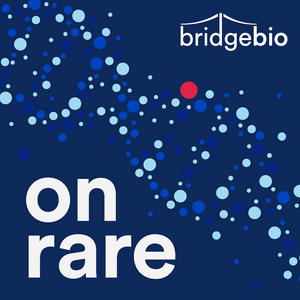
Get the free radio.net app
- Stations and podcasts to bookmark
- Stream via Wi-Fi or Bluetooth
- Supports Carplay & Android Auto
- Many other app features
Get the free radio.net app
- Stations and podcasts to bookmark
- Stream via Wi-Fi or Bluetooth
- Supports Carplay & Android Auto
- Many other app features


On Rare
Scan code,
download the app,
start listening.
download the app,
start listening.




